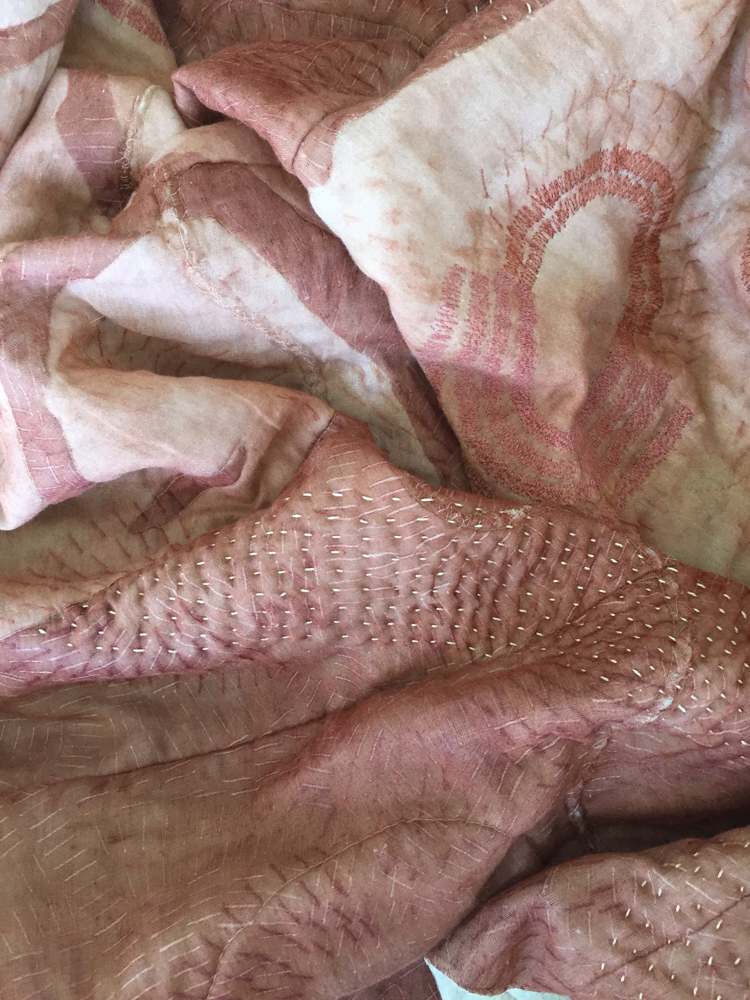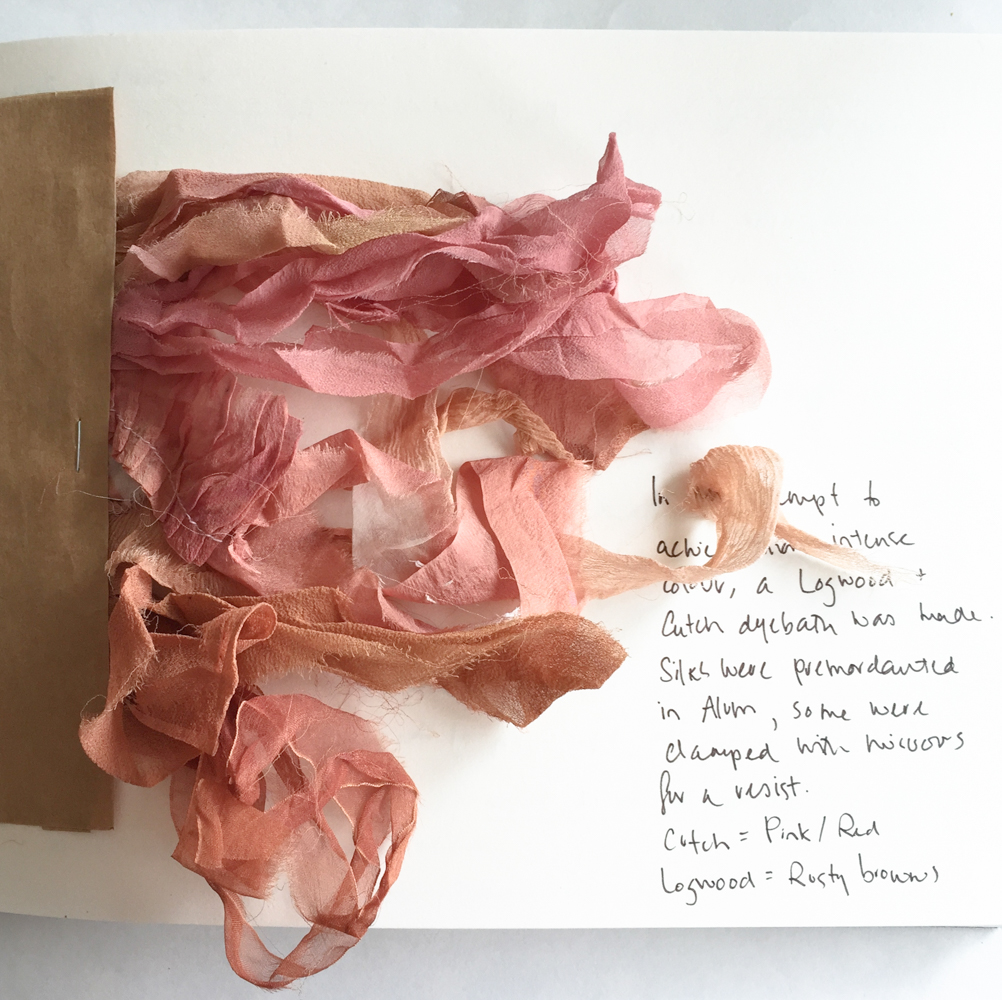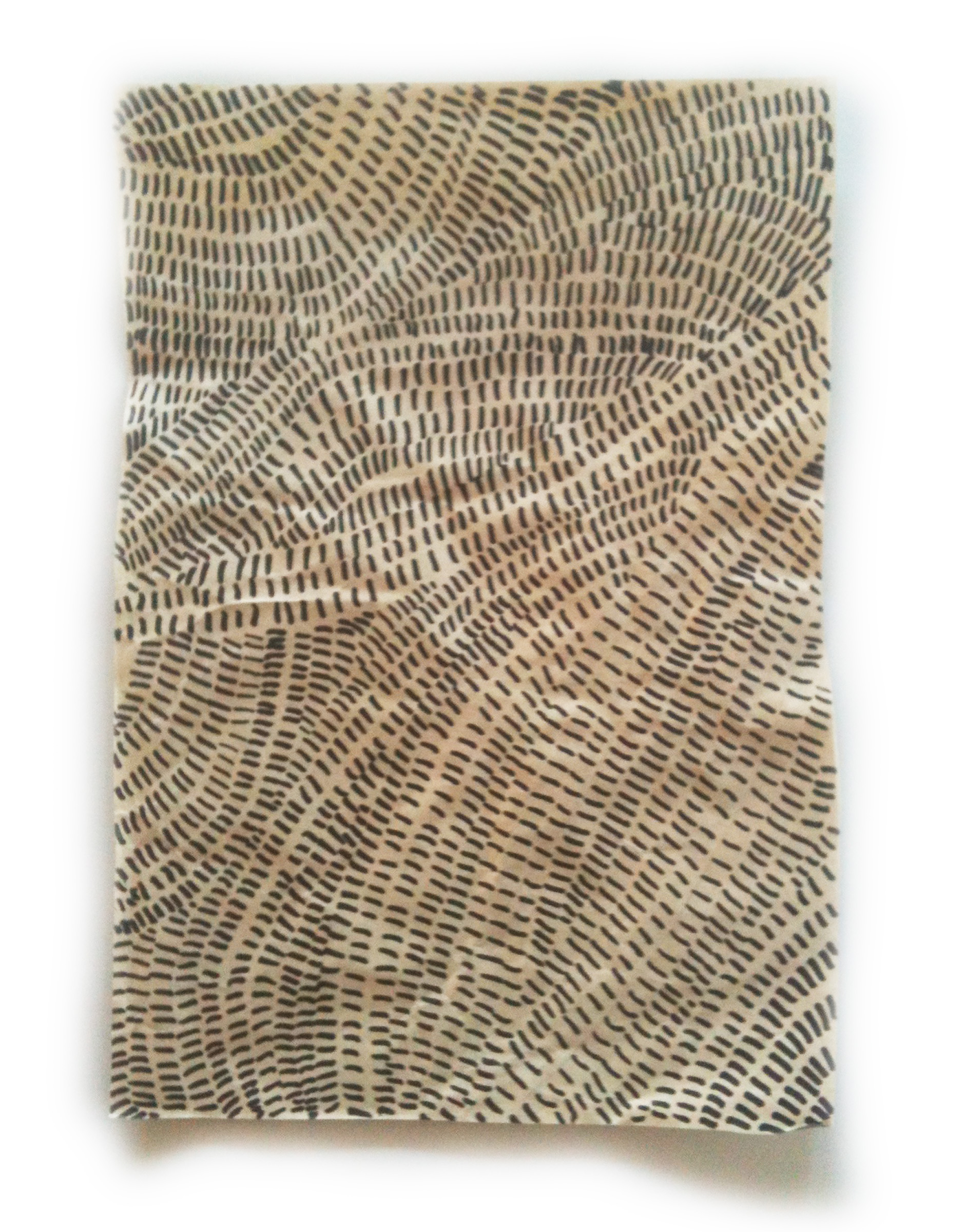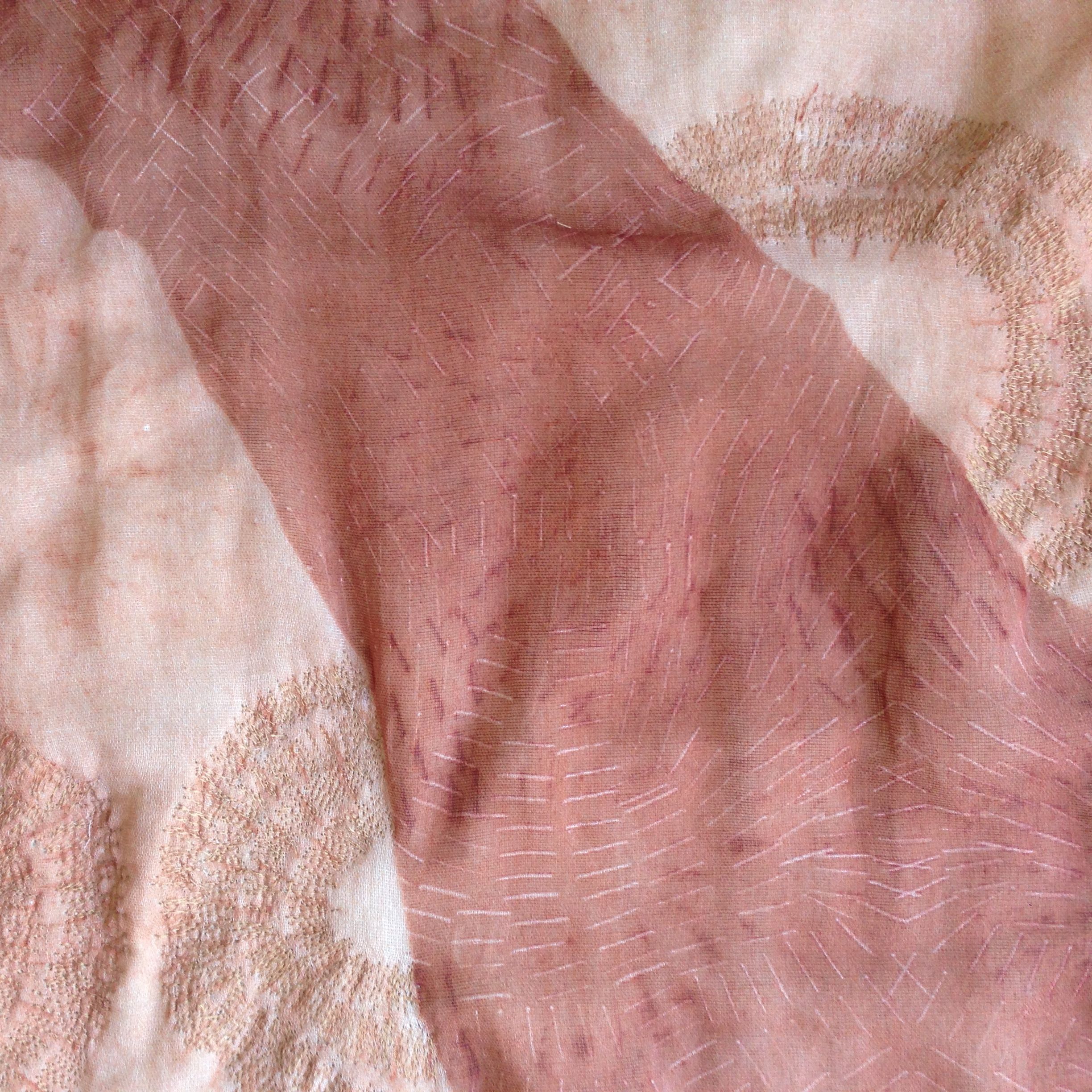It's always an incredible experience to be a part of an exhibition. Labours of Love was beautifully curated and presented by Louise Mitchell and her team at Hazelhurst Gallery. I felt incredibly fortunate to have my work shown amongst an esteemed collection of historic and contemporary quilts. Each tells a story of intimate personal histories alongside cultural and social insights. Textiles are so good at this!
Attending the opening night with family, colleagues and friends was the perfect way to celebrate five months of dying, stitching and felting. So often such endeavours pass without public acknowledgement. If felt slightly strange seeing my quilt outside of my home and in front of a crowded gallery. There was a strict no photography policy to protect the historic quilts. Embarrassingly the flowers my sister had given me dripped water in the carefully calibrated environment. A credit to the gallery that they were quicker than a SWAT team to come control the 'leak'!
I was hoping to return to see the exhibition without the crowds of people from the opening. However my last month of pregnancy kept me at home. Fortunately the exhibition catalogue documented each quilt so that I could go through and find the ones that resonated most with me. The catalogue is now sold out, but you can download the PDF for free from the Hazelhurst Gallery website.












